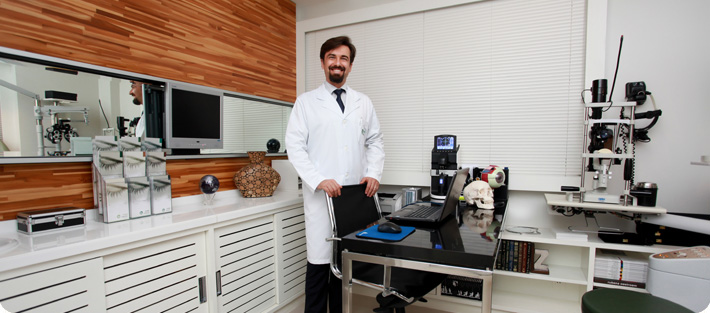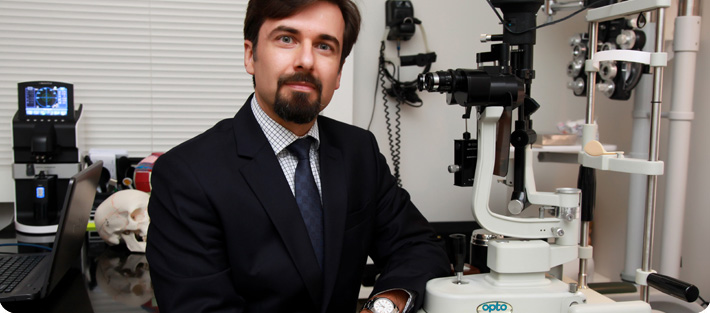Dr. Filipe Pereira
Padrões tomográficos
de celulite orbitária secundária à sinusite
Clique aqui para fazer o download do trabalho completo
Purpose
To describe the CT findings of orbital cellulitis due to sinusitis.
Methods
The records and CT scans of 45 consecutive patients with
orbital cellulitis due to sinusitis treated at the Hospital of the Medical
School of Ribeirão Preto were analyzed by a radiologist and two orbital
surgeons.
Results
Three major types of CT changes were observed:
diffuse fat infiltration, subperiosteal abscess and orbital abscess. Diffuse
fat infiltration (characterized by an increased density of the extra- or
intraconal fat) was seen in 11 patients (24.44%). A subperiosteal abscess
was diagnosed in 28 patients (62.23%). A surgically proved orbital
abscess was detected in 6 patients (13.33%).
Conclusions
In all cases of orbital cellulitis due to sinusitis intraorbital changes can be detected
by CT scans either as a diffuse infiltration of the orbital fat or as a
detachment of the periorbita (subperiosteal abscess) or a true orbital
abscess. Category I of Chandler orbital cellulitis classification (inflammatory
edema) must be understood as a stage of a process that is already
happening within the orbit and, as the term “preseptal cellulitis” means
a palpebral infection, this designation should not be used to stage orbital
cellulitis.







